Empowering Customer Service Teams with the Right Tools and Skills

In 2025, understanding what is customer service management and empowering your customer service team has become more critical than ever. Customers demand faster, personalized support across multiple channels. Businesses that prioritize enhancing customer service management see remarkable results. For instance, companies with a strong customer focus earn 60% more revenue, and 96% of customers remain loyal due to excellent service. These statistics emphasize the importance of building a well-equipped team.
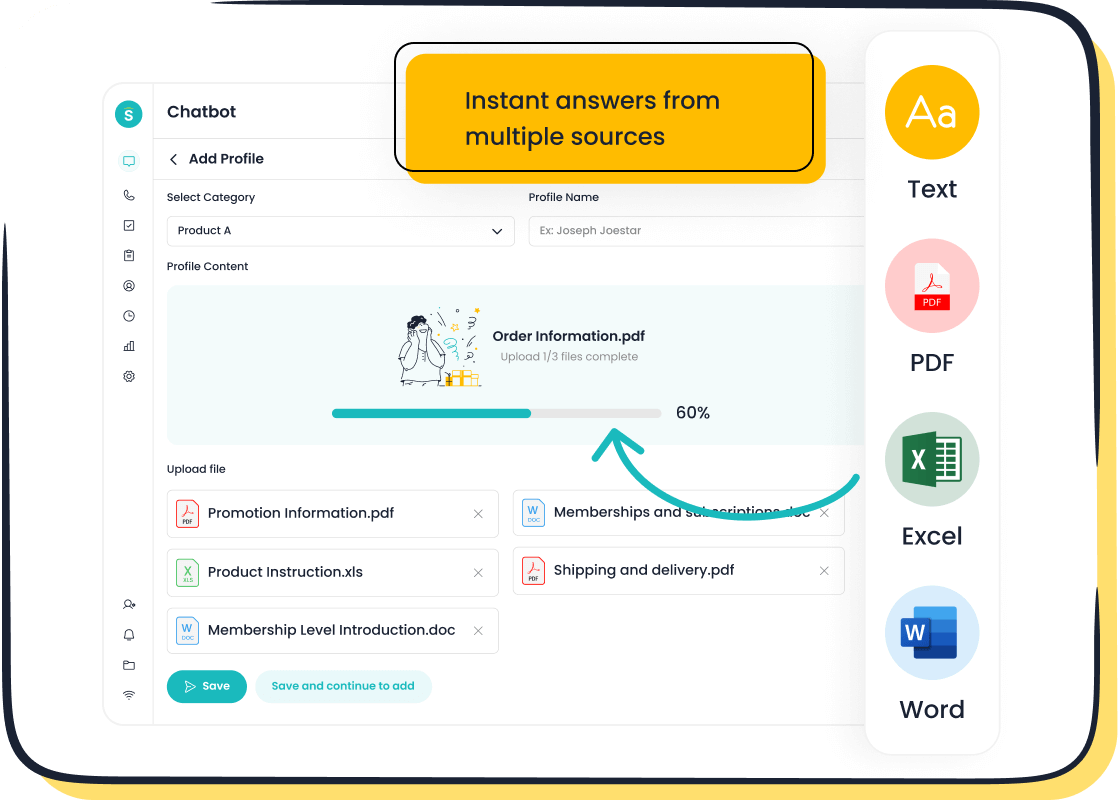
To meet these expectations, you need the right combination of tools and skills. AI-powered solutions like Sobot’s chatbot can efficiently handle routine queries, allowing skilled agents to concentrate on complex issues. This synergy between advanced technology and human expertise ensures your team delivers exceptional experiences, making customers feel valued and connected.
What is Customer Service Management in 2025?
Definition and Scope
Customer service management in 2025 revolves around creating seamless, efficient, and personalized interactions between businesses and their customers. It encompasses tools, processes, and strategies that ensure customer satisfaction, loyalty, and retention. Businesses now rely on measurable metrics to define the scope of their customer service efforts.
| Metric/Parameter | Description |
|---|---|
| Customer Satisfaction Score (CSAT) | Measures customer satisfaction with a service or interaction. |
| First Response Time | The time taken to respond to a customer inquiry. |
| Net Promoter Score (NPS) | Gauges customer loyalty and likelihood to recommend the service. |
| Average Resolution Time | The average time taken to resolve customer issues. |
| Customer Retention Rate | Percentage of customers who continue to use the service over a specific period. |
| Customer Effort Score (CES) | Measures the ease of customer interaction and resolution of issues. |
| First Contact Resolution | The percentage of issues resolved on the first contact with the customer. |
| Quality of Interaction Scores | Evaluates the quality of customer service interactions based on predefined criteria. |
These metrics help you evaluate the effectiveness of your customer service management and identify areas for improvement.
Key Trends Shaping the Future
Customer service in 2025 is shaped by evolving trends that demand innovation and adaptability. Studies reveal that 93% of customers expect higher service standards, while 80% report dissatisfaction due to negative experiences. Businesses face a 71% increase in contact volume since 2020, emphasizing the need for scalable solutions.
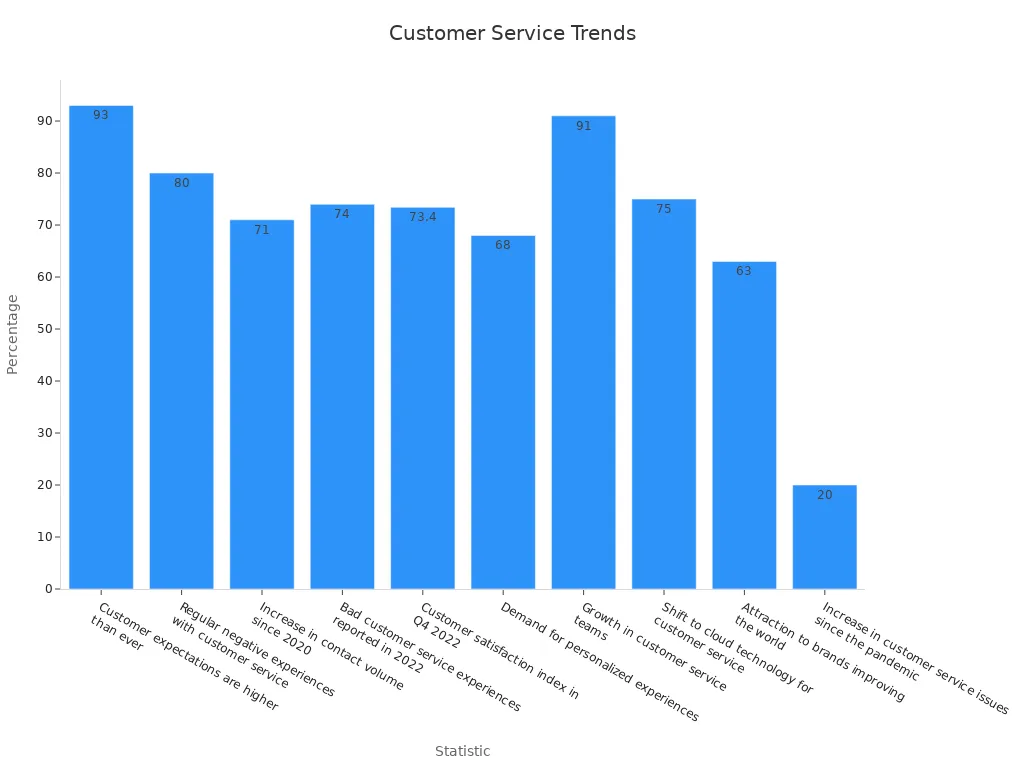

The shift to cloud-based platforms, adopted by 75% of businesses, and the growing demand for personalized experiences (68%) highlight the importance of leveraging AI-powered tools like Sobot’s chatbot. These tools enable you to handle inquiries efficiently, reduce response times, and deliver tailored support across multiple channels.
Importance of Customer-Centric Strategies
Customer-centric strategies are essential for business success in 2025. Customers are four times more likely to switch to competitors if dissatisfied with service. On the other hand, they are willing to pay up to 10% more for exceptional experiences.
| Statistic | Description |
|---|---|
| 4x | Customers are four times more likely to buy from a competitor if they are not satisfied with the service. |
| 10% | Customers are willing to pay up to 10% more for better service. |
| Resilience | A strong product offering and customer experience contribute to business resilience during turbulent times. |
By focusing on customer satisfaction and loyalty, you can build resilience and drive long-term growth. Tools like Sobot’s AI solutions empower you to implement these strategies effectively, ensuring your customers feel valued and supported.
The Evolving Role of Customer Service Teams
Changing Customer Expectations
Customer expectations have evolved significantly in recent years. Today, customers demand faster, more personalized service across multiple channels. A study by Accenture revealed that over 80% of customers prefer resolving issues with a human rather than digital-only channels. Additionally, 52% of customers reported switching brands due to poor service. These statistics highlight the importance of adapting your customer service strategies to meet these rising expectations.
Modern customers also expect 24/7 availability. Over 57% of consumers want the same response times at night and on weekends as during regular business hours. This shift requires your team to adopt tools and processes that ensure accessibility and efficiency. By leveraging solutions like Sobot’s AI-powered chatbot, you can provide round-the-clock support while maintaining high-quality engagement.
Proactive Support as a Standard
Proactive engagement has become a cornerstone of exceptional customer service. Instead of waiting for customers to report issues, you can anticipate their needs and address potential problems before they arise. This approach not only reduces friction but also enhances the overall customer experience.
Proactive support strategies deliver measurable benefits. Companies using predictive analytics to anticipate customer needs report operational efficiency improvements of 20-30%. Customer satisfaction scores also increase by 10-15% when proactive engagement is implemented. For example, analyzing purchase history and support interactions allows you to identify patterns and offer tailored solutions. This method ensures your customers feel valued and supported throughout their journey.
Integration of AI and Automation
AI and automation have transformed the way customer service teams operate. These technologies streamline processes, reduce workloads, and improve response times. Real-world examples demonstrate their impact:
| Company | AI/Automation Implementation | Results |
|---|---|---|
| Motel Rocks | Automated communications and chatbots for self-service. | 43% of tickets deflected by AI agents, 50% reduction in ticket volume, 9.44% increase in customer satisfaction. |
| Camping World | Used AI tools to handle calls 24/7 and assist agents. | 40% increase in customer engagement, 33-second drop in wait times, 33% increase in agent efficiency. |
| Telstra | Deployed AI to summarize customer data quickly. | 20% fewer follow-ups, 84% of agents reported positive impact, 90% of agents became more effective. |
Sobot’s AI solutions, such as its chatbot, exemplify how automation can enhance customer service. By handling repetitive queries, the chatbot allows your team to focus on complex issues, improving both efficiency and engagement. With features like multilingual support and 24/7 availability, Sobot’s tools ensure you meet customer expectations while optimizing operations.
Essential Tools for Empowerment

Empowering your customer service team requires the right tools to streamline operations, enhance personalization, and deliver seamless omnichannel communication. In 2025, businesses that invest in advanced technologies like AI, automation, and cloud-based platforms gain a competitive edge by improving efficiency and customer satisfaction.
AI-Powered Solutions like Sobot Chatbot
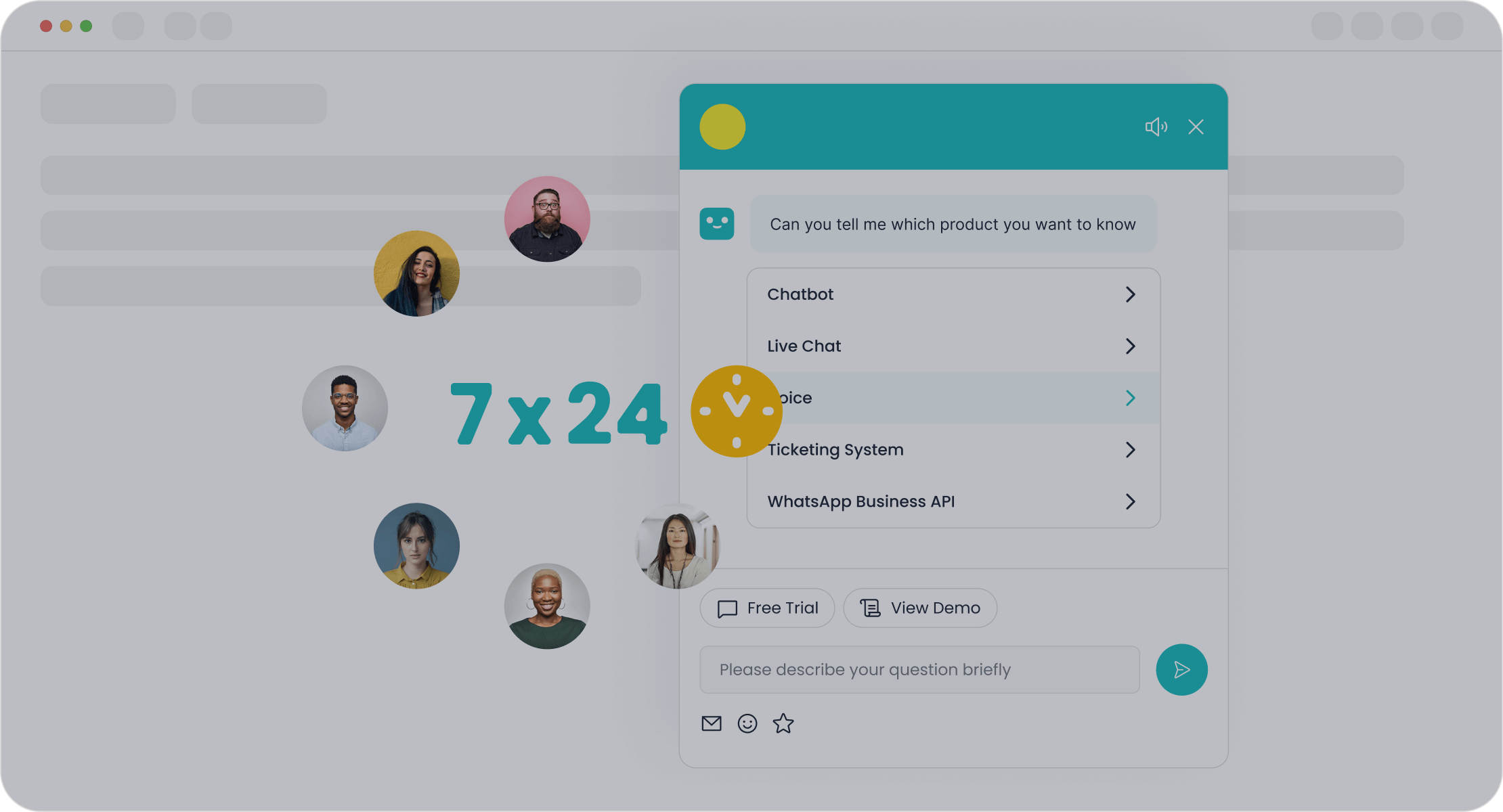
AI-powered solutions have revolutionized customer service by enabling real-time interactions and automating repetitive tasks. Tools like the Sobot Chatbot provide 24/7 support, ensuring your customers receive assistance whenever they need it. This chatbot offers multilingual capabilities, making it ideal for businesses with a global presence. Its no-coding-required setup allows you to deploy it quickly, saving time and resources.
The Sobot Chatbot stands out for its advanced automation and scalability. For example, it can handle high volumes of inquiries during peak times, reducing response times by up to 40%. Businesses like OPPO have achieved an 83% chatbot resolution rate and a 57% increase in repurchase rates by integrating Sobot's solutions. Compared to other platforms, Sobot excels in response automation and query handling, as shown below:
| Feature | Sobot | Zendesk | Freshdesk |
|---|---|---|---|
| Response Automation | Advanced automation with AI learning | Rule-based automation | Predictive automation |
| Chatbot Capabilities | 24/7 chatbot support | Integrated chatbot | Smart chatbot |
| Query Handling | Multi-language support | Contextual understanding | Priority-based handling |
| Scalability | Highly scalable | Enterprise-ready | Adaptive scaling |
By leveraging AI-powered tools like Sobot, you can enhance personalization and ensure consistent omnichannel communication, leading to higher customer satisfaction and loyalty.
Automation Tools for Efficiency
Automation tools play a crucial role in improving efficiency and reducing operational costs. These tools minimize response times, allowing your team to focus on complex issues. For instance, automation enables self-service options, empowering customers to resolve simple queries independently. This reduces the workload on your agents and improves the overall customer experience.
Key benefits of automation include:
- Faster response times, addressing customer frustrations over delays.
- Enhanced self-service options, enabling customers to solve issues on their own.
| Improvement Type | Description |
|---|---|
| Increased Efficiency and Productivity | Automation tools streamline processes, reducing manual work and allowing teams to focus on complex issues. |
| Improved Communication and Response Times | Automation enhances communication, enabling quicker responses to customer inquiries. |
| Cost Savings | Streamlining processes with automation tools can significantly reduce operational expenses. |
| Enhanced Customer Satisfaction | Automation provides 24/7 support, improving the overall customer experience and loyalty. |
For example, in the e-commerce industry, ShopSmart reduced response times by 40% and increased order processing by 25% using automation. Similarly, MedCare in healthcare improved resolution rates by 35%, showcasing the transformative impact of automation tools.
Cloud-Based Platforms for Collaboration
Cloud-based platforms have become essential for fostering collaboration and ensuring seamless omnichannel communication. These platforms centralize customer data, enabling your team to access real-time insights and provide personalized support. With cloud-based tools, you can unify communication channels like email, chat, and social media into a single interface.
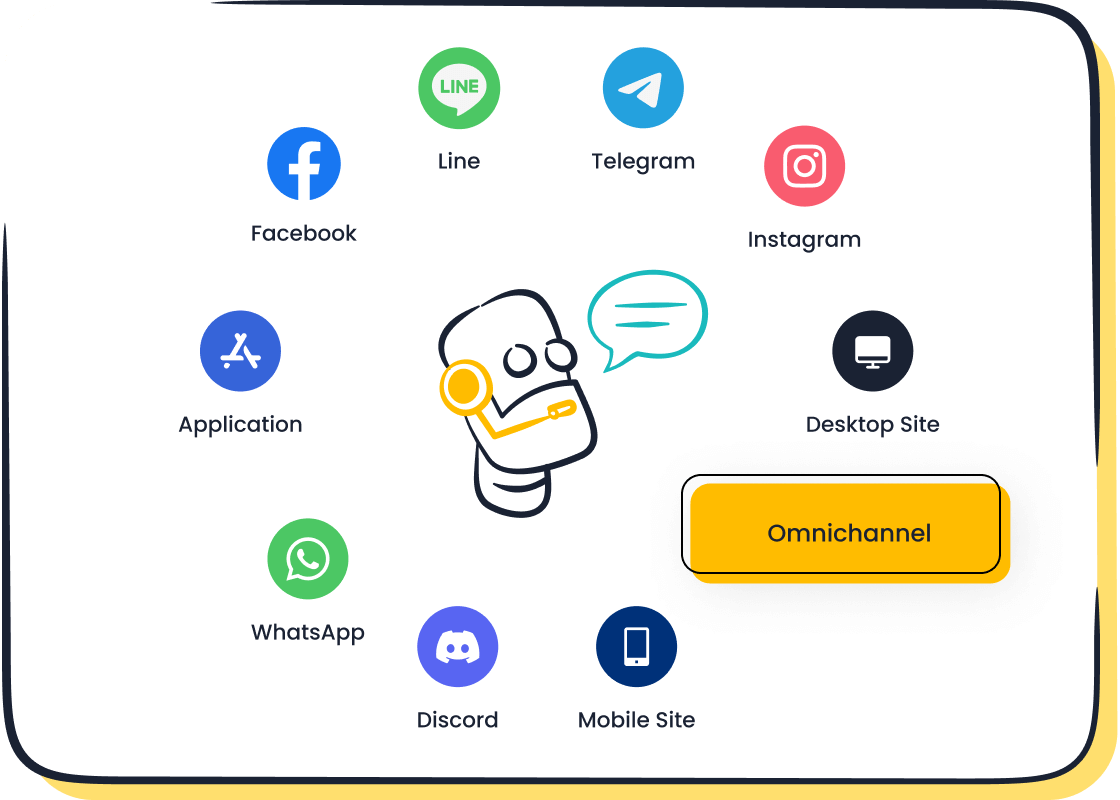
Sobot’s cloud-based solutions, such as its Live Chat and Ticketing System, exemplify the power of these platforms. The Live Chat unifies messages from all channels, allowing agents to respond efficiently. The Ticketing System automates workflows and manages service-level agreements (SLAs), ensuring timely issue resolution. These tools not only improve team collaboration but also enhance the customer experience.
Cloud-based platforms also offer scalability, making them suitable for businesses of all sizes. They ensure data security and compliance, addressing concerns about privacy and regulations. By adopting these platforms, you can streamline operations, reduce costs, and deliver exceptional service across all touchpoints.
Analytics Tools for Data-Driven Insights
Analytics tools empower you to make smarter decisions by turning raw data into actionable insights. These tools help you understand customer behavior, identify trends, and optimize your operations. In customer service, analytics tools are essential for improving efficiency, enhancing customer experiences, and staying ahead of competitors.
Why Analytics Tools Matter
Analytics tools provide clarity in decision-making. Instead of relying on intuition, you can use data to guide your strategies. For example, analyzing customer feedback helps you identify areas for improvement. Understanding preferences allows you to offer personalized solutions, increasing satisfaction and loyalty.
📊 Did you know? Businesses using analytics tools report up to 30% higher customer retention rates due to improved personalization and proactive engagement.
Operational efficiency also improves with analytics tools. They highlight inefficiencies, enabling you to allocate resources effectively. For instance, identifying peak inquiry times helps you schedule agents accordingly, reducing wait times and enhancing service quality.
Key Benefits of Analytics Tools
- Enhanced decision-making: Data-driven strategies replace guesswork, ensuring smarter choices.
- Improved customer experiences: Insights into preferences lead to tailored offerings and better satisfaction.
- Operational efficiency: Identifying inefficiencies saves time and reduces costs.
- Competitive advantage: Continuous analysis helps you anticipate trends and innovate faster.
- Risk mitigation: Early detection of risks allows proactive measures to avoid issues.
Sobot’s Analytics Capabilities
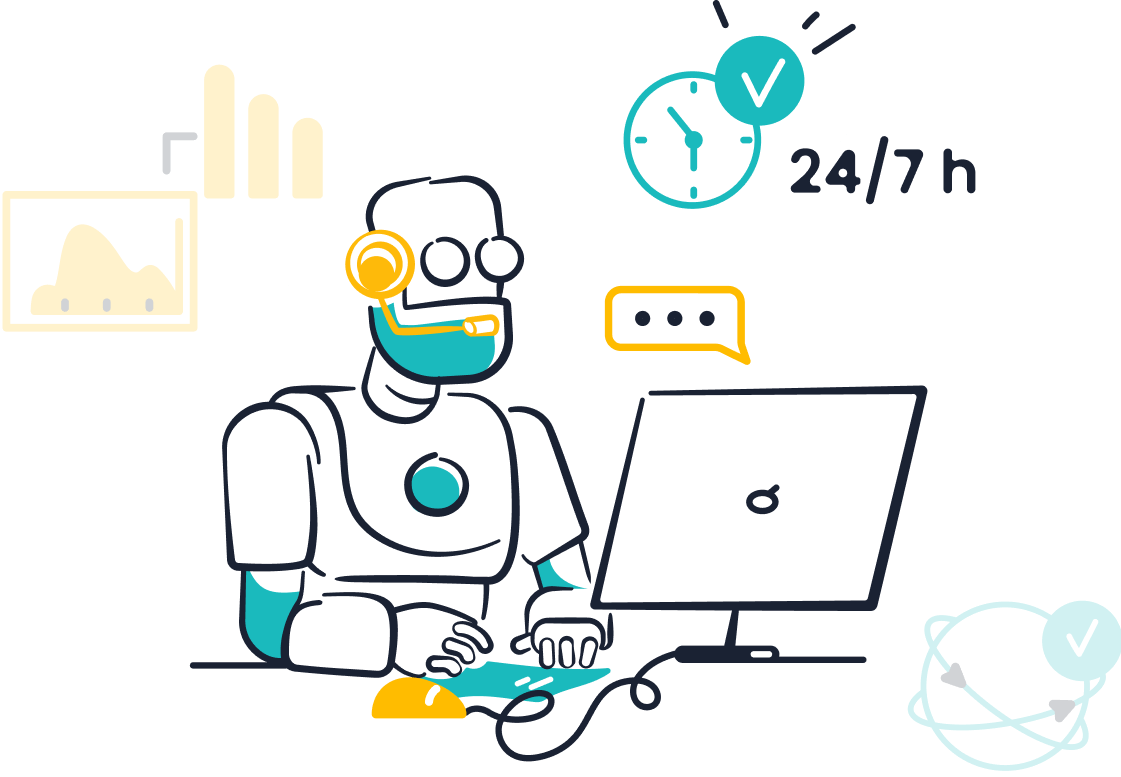
Sobot’s analytics tools take data-driven insights to the next level. The platform provides real-time reporting, enabling you to monitor team performance and customer interactions. For example, Sobot’s AI-powered solutions analyze conversation data to identify gaps in your knowledge base. This ensures your team delivers accurate and timely responses.
Sobot’s tools also integrate seamlessly with omnichannel platforms, giving you a unified view of customer data. This integration helps you track metrics like Net Promoter Score (NPS) and First Contact Resolution (FCR) across all channels. By leveraging these insights, you can refine your strategies and improve customer satisfaction.
Real-World Impact
Companies using Sobot’s analytics tools have achieved remarkable results. OPPO, a global leader in smart devices, optimized its knowledge base with Sobot’s solutions. This reduced maintenance efforts by 90% and improved chatbot resolution rates to 83%. These insights helped OPPO enhance customer satisfaction and boost repurchase rates by 57%.
Analytics tools are not just about numbers; they are about understanding your customers and delivering value. By adopting tools like Sobot’s, you can transform data into meaningful actions, ensuring your customer service team stays empowered and effective.
Key Skills for Success in Customer Service

Success in customer service depends on mastering key skills that enhance engagement and build lasting relationships with customers. These skills empower you to deliver personalized customer experiences, improve satisfaction, and foster loyalty.
Empathy and Emotional Intelligence
Empathy and emotional intelligence are essential for creating personalized interactions. When you understand and respond to customer emotions, you make them feel valued. This skill helps you connect on a deeper level, turning routine exchanges into meaningful conversations.
Studies show that developing empathy leads to measurable improvements in customer service metrics. For example:
| Performance Metric | Average Improvement | Implementation Timeframe | Best Practices |
|---|---|---|---|
| CSAT Scores | 10-15% | 3-6 months | Regular feedback, role-playing, focus on empathy |
| FCR Rates | 5-10% | 6-12 months | Active listening training, improved problem-solving skills |
| Customer Retention | 2-5% | 12+ months | Building rapport, personalized communication |
To enhance emotional intelligence, focus on active listening and personalized communication. For instance, Sobot’s AI-powered chatbot can assist by handling routine queries, freeing you to focus on building relationships with customers. This combination of human empathy and AI-driven efficiency ensures effective support and personalized experiences.
Effective Communication Techniques
Effective customer communication management is the cornerstone of resolving issues and delivering exceptional service. Clear, professional communication fosters trust and ensures customers feel heard.
Best-in-class examples demonstrate how communication techniques improve customer satisfaction:
| Technique | Description |
|---|---|
| Listen and Validate | Express understanding of the customer’s frustration and show empathy. |
| Troubleshoot or Offer Solutions | Guide the customer through troubleshooting steps and provide options like replacement or refund. |
| Follow-Up | Ensure the solution meets the customer’s needs through proactive engagement. |
| Active Listening | Fully focus on the customer’s concerns to show genuine care and de-escalate situations. |
| Paraphrase and Confirm | Rephrase concerns to show understanding and clarify details. |
For example, when a customer expresses dissatisfaction, you can validate their feelings and offer solutions tailored to their needs. Tools like Sobot’s Live Chat platform simplify this process by unifying communication channels, enabling you to respond quickly and effectively. This approach enhances engagement and ensures a personalized customer experience.
Adaptability in a Dynamic Environment
Adaptability is crucial for navigating the ever-changing landscape of customer service. You must be prepared to handle diverse scenarios, from managing inquiries across multiple channels to addressing unexpected challenges.
Adaptability improves response times and customer satisfaction. Key practices include:
- Experience in various customer service channels, such as phone, email, chat, and social media.
- Flexibility in exploring solutions that meet customer needs.
- Continuous learning about new products and industry trends.
- Active listening to provide sound solutions and reassurance.
Sobot’s AI solutions exemplify adaptability by integrating seamlessly with omnichannel platforms. For instance, its chatbot operates 24/7, ensuring consistent support across all channels. This flexibility allows you to deliver effective support while maintaining personalization, even in dynamic environments.
Problem-Solving and Critical Thinking
Problem-solving and critical thinking are essential skills for any customer service team. These abilities help you address customer concerns effectively and find solutions that leave a lasting positive impression. In 2025, as customer expectations continue to rise, mastering these skills will set your team apart.
Why Problem-Solving Matters
Customers often reach out when they face challenges. Your ability to resolve these issues quickly and efficiently determines their satisfaction. Studies show that 89% of customers stop doing business with a company after a poor service experience. On the other hand, businesses that excel in problem-solving see a 20% increase in customer retention rates.
💡 Tip: Always approach problems with a solution-oriented mindset. This builds trust and reassures customers that their concerns matter.
Steps to Effective Problem-Solving
You can break down problem-solving into clear, actionable steps:
- Identify the Problem: Listen carefully to the customer. Ask clarifying questions to understand the root cause.
- Analyze the Situation: Gather relevant information. Use tools like Sobot’s analytics platform to access customer history and identify patterns.
- Generate Solutions: Brainstorm possible resolutions. Consider both immediate fixes and long-term improvements.
- Implement the Solution: Act promptly. Communicate the steps you’re taking to resolve the issue.
- Evaluate the Outcome: Follow up with the customer. Ensure the solution met their expectations and address any lingering concerns.
Critical Thinking in Customer Service
Critical thinking allows you to evaluate situations objectively and make informed decisions. It involves analyzing information, identifying biases, and considering multiple perspectives. For example, when a customer reports an issue with a product, critical thinking helps you determine whether the problem lies with the product itself, the instructions provided, or user error.
| Skill | How It Helps |
|---|---|
| Analytical Thinking | Breaks down complex problems into manageable parts. |
| Decision-Making | Helps you choose the best course of action based on available data. |
| Creativity | Encourages innovative solutions to unique customer challenges. |
| Attention to Detail | Ensures no aspect of the problem is overlooked. |
Real-World Example: Sobot in Action
Sobot’s AI-powered chatbot exemplifies problem-solving and critical thinking in action. For instance, OPPO, a global leader in smart devices, used Sobot’s chatbot to handle repetitive queries. This freed up human agents to focus on complex issues requiring critical thinking. The result? An 83% chatbot resolution rate and a 57% increase in repurchase rates.
By integrating tools like Sobot’s chatbot, you can enhance your team’s problem-solving capabilities. The chatbot operates 24/7, providing instant solutions to common issues. Meanwhile, your agents can use the time saved to analyze and resolve more intricate problems.
Building a Problem-Solving Culture
To foster a culture of problem-solving and critical thinking, consider these strategies:
- Encourage Collaboration: Create an environment where team members share ideas and learn from each other.
- Invest in Training: Provide workshops on analytical thinking and decision-making.
- Leverage Technology: Use tools like Sobot’s analytics and ticketing systems to streamline processes and gather insights.
- Reward Initiative: Recognize employees who demonstrate exceptional problem-solving skills.
🚀 Note: Empowering your team with the right tools and skills, like Sobot’s solutions, ensures they can tackle challenges effectively and deliver exceptional customer service.
By mastering problem-solving and critical thinking, you not only resolve customer issues but also build trust and loyalty. These skills, combined with advanced tools like Sobot’s chatbot, position your team for success in 2025 and beyond.
Customer Success Strategies for Implementation
Conducting Skills Assessments
Conducting skills assessments ensures your customer service team has the right capabilities to meet customer expectations. These assessments provide valuable insights into individual strengths and areas for improvement. For example, cognitive abilities assessments evaluate decision-making skills, while situational judgment tests measure how well team members handle real-life scenarios.
| Assessment Method | Outcome |
|---|---|
| Cognitive Abilities Assessment | Provides data on decision-making processes. |
| Skills Tests | Evaluates specific competencies for customer service roles. |
| Situational Judgment Tests | Measures responses to real-world customer service challenges. |
| Personality Tests | Assesses interpersonal skills and cultural fit. |
Using tailored evaluations reduces bias and ensures your team aligns with organizational goals. For instance, Sobot’s AI-powered tools can assist in identifying gaps in team performance by analyzing customer interactions. This data-driven approach helps you make informed decisions about training and hiring, ultimately improving customer engagement and retention.
Investing in Training Programs
Investing in training programs is one of the most effective customer success strategies. Well-trained teams deliver better service, leading to higher customer satisfaction and loyalty. Studies show that businesses prioritizing customer experience achieve revenue growth 1.7 times faster than their competitors. Additionally, customer experience leaders see a 307% return on stock performance.
| Evidence Description | Return on Investment |
|---|---|
| Revenue growth for customer-focused businesses | 1.7 times faster |
| Stock performance for experience leaders | 307% return |
| Increase in customer lifetime value | 2.3 times average growth |
Training programs should focus on both technical skills and soft skills like empathy and communication. For example, Sobot’s solutions, such as its Live Chat platform, simplify workflows, allowing your team to focus on building meaningful customer relationships. By equipping your team with the right tools and knowledge, you enhance engagement and drive long-term retention.
Integrating Tools Seamlessly into Workflows
Integrating tools seamlessly into workflows ensures your team operates efficiently and delivers consistent service. Tools like Sobot’s AI-powered chatbot and ticketing system streamline processes by automating repetitive tasks and centralizing customer data. This reduces response times and improves customer satisfaction.
| Metric | Benefit Description |
|---|---|
| Average Response Time | Faster resolutions reduce customer frustration. |
| Customer Satisfaction (CSAT) | Higher scores reflect improved service quality. |
| Net Promoter Score (NPS) | Indicates greater customer loyalty and satisfaction. |
| Customer Effort Score (CES) | Lower scores show easier customer interactions, enhancing experiences. |
For example, OPPO achieved an 83% chatbot resolution rate and a 57% increase in repurchase rates by integrating Sobot’s solutions. These tools not only improve operational efficiency but also foster stronger customer engagement. Regularly reviewing and optimizing workflows ensures your tools remain aligned with your business goals.
Encouraging a Culture of Continuous Learning
Fostering a culture of continuous learning within your customer service team is one of the most impactful customer success strategies you can implement. It not only enhances individual skills but also drives team-wide innovation and adaptability. Employees who engage in ongoing learning feel more confident and capable, which directly translates into better customer interactions.
Studies show that employees in a learning-focused environment are 47% less likely to feel stressed and 39% more likely to feel productive. They also become 23% more capable of handling additional responsibilities and 21% happier in their roles. This positivity reflects in their work, leading to improved customer satisfaction and loyalty.
| Benefit | Description |
|---|---|
| Improved Employee Engagement | Employees feel more motivated and engaged when interacting with customers. |
| Better Customer Experiences | Skilled employees resolve issues more effectively, meeting customer needs with precision. |
| Enhanced Professional Confidence | Continuous learning boosts confidence, enabling employees to handle challenges with ease. |
To encourage this culture, start by offering regular training sessions tailored to your team's needs. For example, Sobot’s AI-powered tools, like its chatbot and analytics platform, simplify workflows and provide actionable insights. These tools free up time for your team to focus on skill development and innovation. You can also introduce mentorship programs where experienced team members share their expertise with newer colleagues.
Companies that prioritize learning often outperform their competitors. Research indicates that businesses offering comprehensive training programs can see income per employee increase by up to 200%. This underscores the importance of investing in your team’s growth as part of your customer success strategies.
Finally, recognize and reward employees who actively pursue learning opportunities. Whether through certifications, workshops, or self-paced courses, their efforts contribute to a stronger, more capable team. By fostering continuous learning, you empower your team to adapt to evolving customer needs and deliver exceptional service.
Measuring Success in Customer Experience
Key Performance Indicators (KPIs)
Measuring the success of your customer experience efforts starts with tracking the right key performance indicators (KPIs). These metrics provide a clear picture of how well your strategies are working and where improvements are needed.
| KPI Type | Description |
|---|---|
| Customer Satisfaction | Measures overall satisfaction with the experience. |
| Loyalty | Assesses customer loyalty and likelihood to recommend the brand. |
| Usability | Indicates the percentage of tasks completed successfully by users. |
| Error Rate | Tracks the frequency of user errors during interactions. |
| Time on Task | Measures the average time users spend on tasks, with shorter times suggesting better UX. |
| Engagement | Focuses on customer engagement and retention, crucial for understanding the customer journey. |
For example, tracking customer satisfaction through CSAT scores helps you understand how well your team meets expectations. Similarly, Net Promoter Score (NPS) reveals how likely customers are to recommend your brand, a key indicator of customer loyalty. Tools like Sobot’s analytics platform simplify KPI tracking by providing real-time insights into customer interactions, enabling you to make data-driven decisions.
Gathering and Acting on Customer Feedback
Customer feedback is a goldmine for improving your customer experience. Listening to your customers helps you identify pain points and refine your strategies. Studies show that businesses that act on feedback see a 15% increase in customer satisfaction and loyalty.
To gather feedback effectively, use tools like surveys, live chat transcripts, and social media monitoring. For instance, Sobot’s Live Chat platform allows you to collect feedback directly from conversations. Once you have the data, categorize it into actionable insights. Address recurring issues promptly and communicate the changes to your customers. This approach not only improves satisfaction but also strengthens engagement by showing customers that their opinions matter.
💡 Tip: Regularly review feedback trends to stay ahead of customer expectations and maintain a competitive edge.
Monitoring Team Performance and Growth
Your team’s performance plays a critical role in delivering exceptional customer service. Monitoring their growth ensures they stay aligned with your goals and continue to improve.
| Metric Type | Description |
|---|---|
| Operational Metrics | Measure the efficiency and effectiveness of customer service teams through quantitative data. |
| Organizational Metrics | Highlight gaps between customer expectations and reality, focusing on feedback and experiences. |
Operational metrics like average response time and first contact resolution rate reveal how efficiently your team handles inquiries. Organizational metrics, such as customer feedback scores, highlight areas where your team can improve. Sobot’s ticketing system provides detailed reports on team performance, helping you identify strengths and areas for development.
Encourage regular training sessions and set clear performance benchmarks. Recognize top performers to motivate your team and foster a culture of continuous improvement. By monitoring performance closely, you ensure your team consistently delivers high-quality customer experiences.
Adjusting Strategies Based on Data Insights
Data insights play a crucial role in refining your customer service strategies. By analyzing metrics like customer satisfaction scores and Net Promoter Scores (NPS), you can identify trends and areas for improvement. For example, if your analytics reveal a drop in satisfaction during peak hours, you can adjust staffing levels or deploy AI-powered tools like Sobot’s chatbot to handle high volumes of inquiries efficiently.
You should focus on actionable insights to enhance customer experience. Start by reviewing feedback from surveys and live chat interactions. Look for recurring issues, such as long response times or unclear communication. Address these problems by optimizing workflows or providing additional training for your team. For instance, Sobot’s analytics platform helps you track metrics like First Contact Resolution (FCR) and Average Response Time, enabling you to pinpoint inefficiencies and implement targeted solutions.
Data-driven strategies also allow you to personalize customer interactions. Use insights from purchase history and previous inquiries to tailor your responses. Customers appreciate personalized service, which boosts satisfaction and loyalty. Studies show that businesses leveraging data for personalization see a 20% increase in customer retention rates. Tools like Sobot’s omnichannel solutions make it easier to access and analyze customer data across platforms, ensuring consistent and tailored support.
Regularly monitor your metrics to stay ahead of customer expectations. Set benchmarks for key performance indicators (KPIs) and compare them to industry standards. If your NPS falls below average, investigate the root cause and take corrective action. Continuous improvement based on data insights ensures your team delivers exceptional customer experiences and maintains high levels of satisfaction.
📊 Pro Tip: Use real-time analytics to identify trends early and adapt your strategies quickly. Platforms like Sobot provide comprehensive reporting tools that simplify this process.
Empowering your customer service team with the right tools and skills ensures long-term success. Combining advanced solutions like Sobot Chatbot with human expertise creates a seamless experience that drives customer satisfaction. The chatbot’s ability to operate 24/7, handle multilingual queries, and automate repetitive tasks allows your team to focus on building meaningful connections.
The intelligent robot customer service system market is projected to reach $7 billion by 2025, growing at a CAGR exceeding 20%. This rapid expansion highlights the increasing demand for integrated solutions that enhance efficiency and customer service quality. Businesses investing in these technologies position themselves to thrive in a competitive landscape while fostering loyalty and satisfaction.
Take proactive steps to equip your team with innovative tools and continuous learning opportunities. By doing so, you not only meet customer expectations but also set the foundation for sustainable growth.
FAQ
What is the role of AI in customer service?
AI enhances customer service by automating repetitive tasks, providing 24/7 support, and delivering personalized experiences. Tools like Sobot’s AI-powered chatbot improve efficiency by resolving routine queries, allowing your team to focus on complex issues. Businesses using AI report up to a 40% reduction in response times.
How does Sobot’s chatbot improve customer satisfaction?
Sobot’s chatbot operates 24/7, supports multiple languages, and provides instant responses. It reduces wait times and ensures consistent service quality. For example, OPPO achieved an 83% chatbot resolution rate and a 57% increase in repurchase rates by integrating Sobot’s solutions.
Why are customer service skills important in 2025?
Customer expectations are higher than ever. Skills like empathy, adaptability, and problem-solving help you deliver personalized experiences. Combining these skills with tools like Sobot’s analytics platform ensures your team meets customer needs effectively, boosting satisfaction and loyalty.
What are the benefits of using analytics tools in customer service?
Analytics tools provide actionable insights into customer behavior and team performance. Sobot’s analytics platform helps you track metrics like Net Promoter Score (NPS) and First Contact Resolution (FCR), enabling data-driven decisions that improve efficiency and customer satisfaction.
How can businesses integrate Sobot’s tools into their workflows?
Sobot’s tools, such as its chatbot and ticketing system, integrate seamlessly with existing platforms. They centralize customer data, automate workflows, and unify communication channels. This streamlines operations, reduces response times, and enhances customer experiences across all touchpoints.
See Also
Enhancing Efficiency With AI-Driven Customer Service Tools
Transforming Customer Support Through AI Service Agents
Enhance SaaS Customer Support Using Live Chat Techniques
